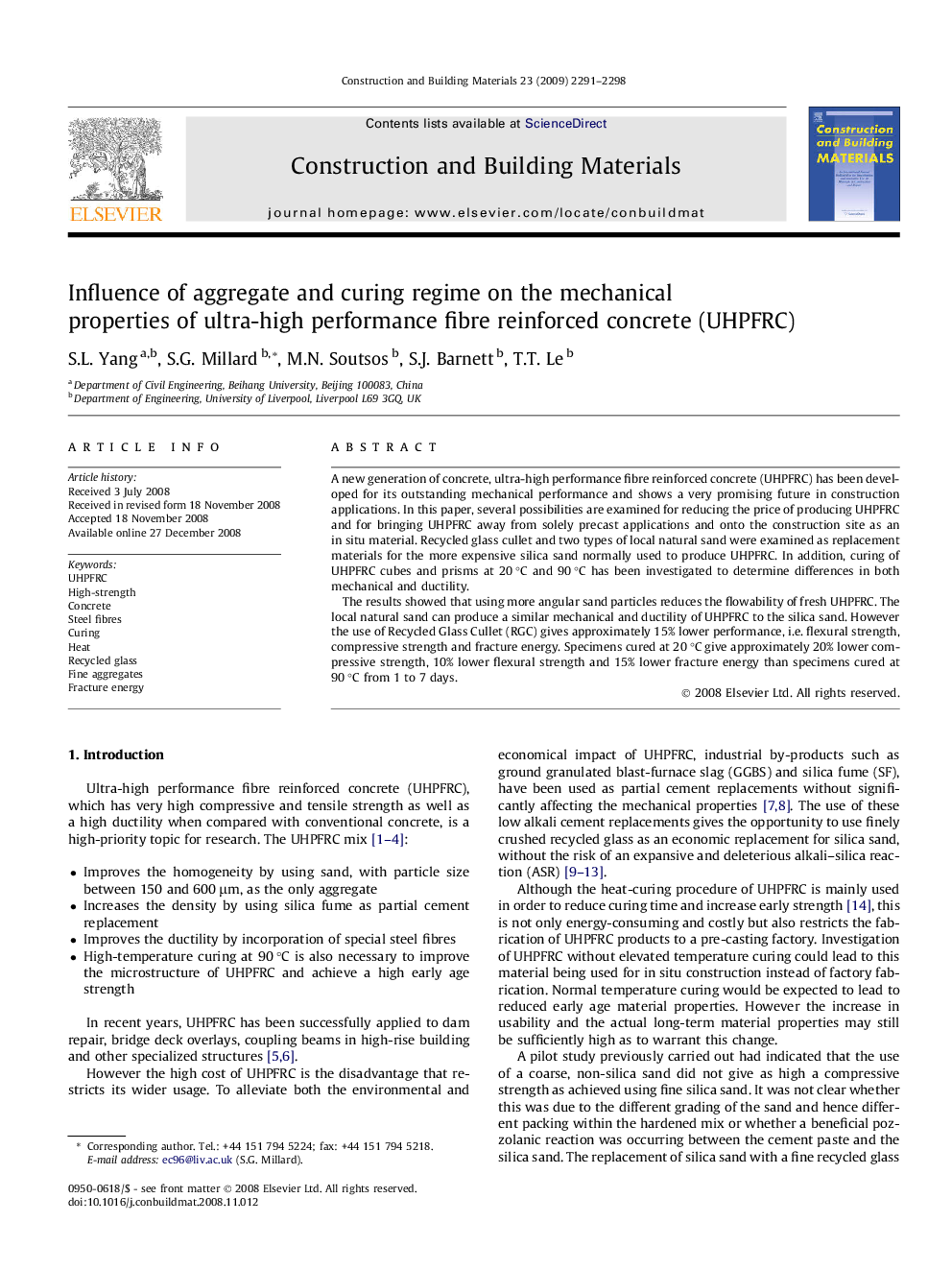| Article ID | Journal | Published Year | Pages | File Type |
|---|---|---|---|---|
| 260338 | Construction and Building Materials | 2009 | 8 Pages |
A new generation of concrete, ultra-high performance fibre reinforced concrete (UHPFRC) has been developed for its outstanding mechanical performance and shows a very promising future in construction applications. In this paper, several possibilities are examined for reducing the price of producing UHPFRC and for bringing UHPFRC away from solely precast applications and onto the construction site as an in situ material. Recycled glass cullet and two types of local natural sand were examined as replacement materials for the more expensive silica sand normally used to produce UHPFRC. In addition, curing of UHPFRC cubes and prisms at 20 °C and 90 °C has been investigated to determine differences in both mechanical and ductility.The results showed that using more angular sand particles reduces the flowability of fresh UHPFRC. The local natural sand can produce a similar mechanical and ductility of UHPFRC to the silica sand. However the use of Recycled Glass Cullet (RGC) gives approximately 15% lower performance, i.e. flexural strength, compressive strength and fracture energy. Specimens cured at 20 °C give approximately 20% lower compressive strength, 10% lower flexural strength and 15% lower fracture energy than specimens cured at 90 °C from 1 to 7 days.
